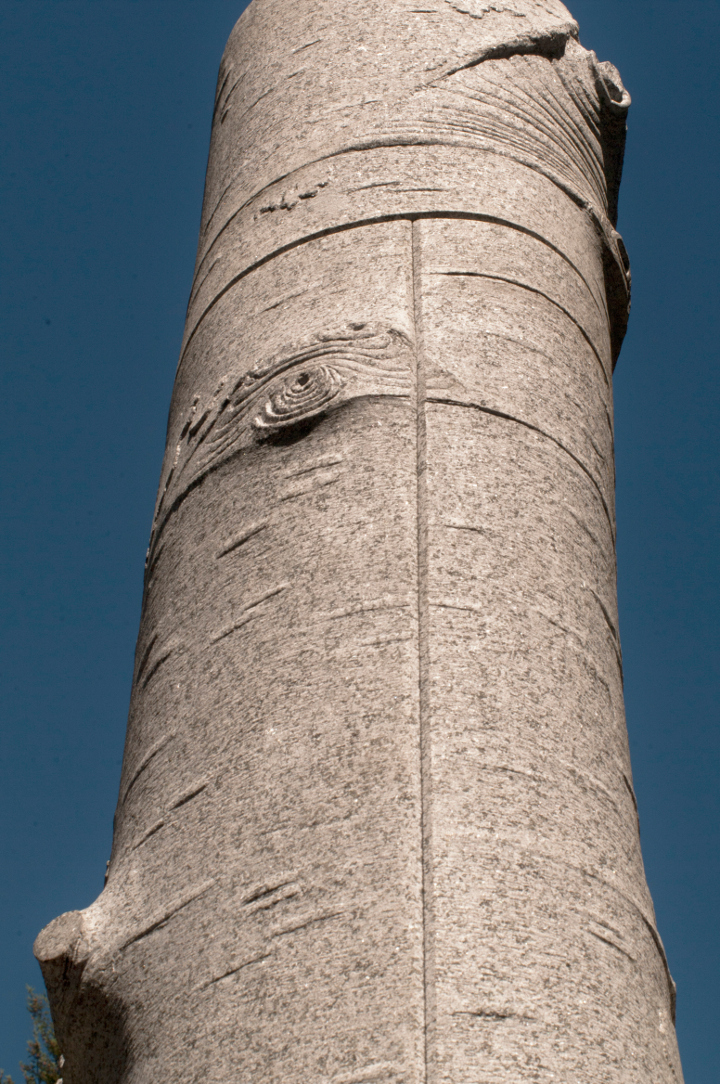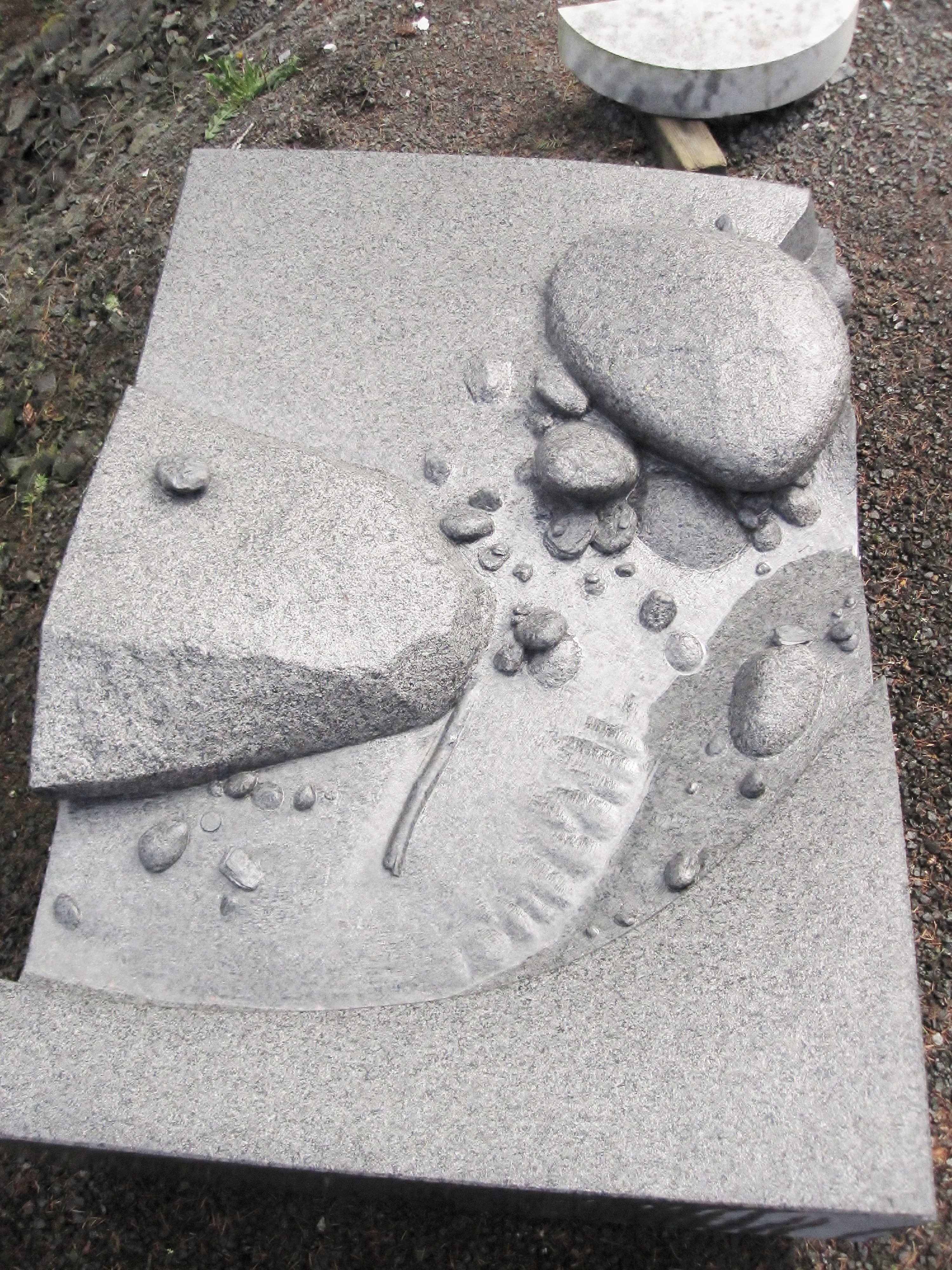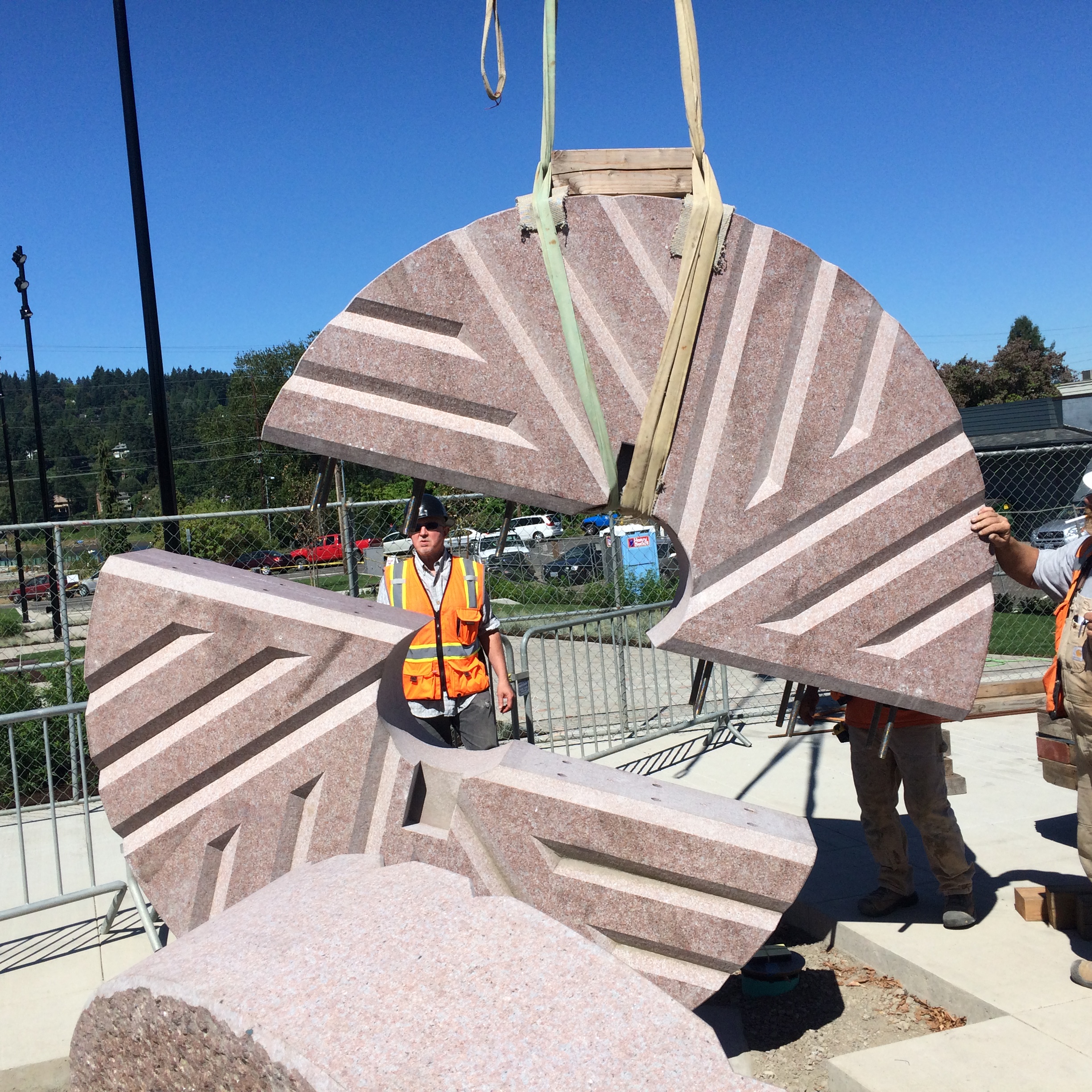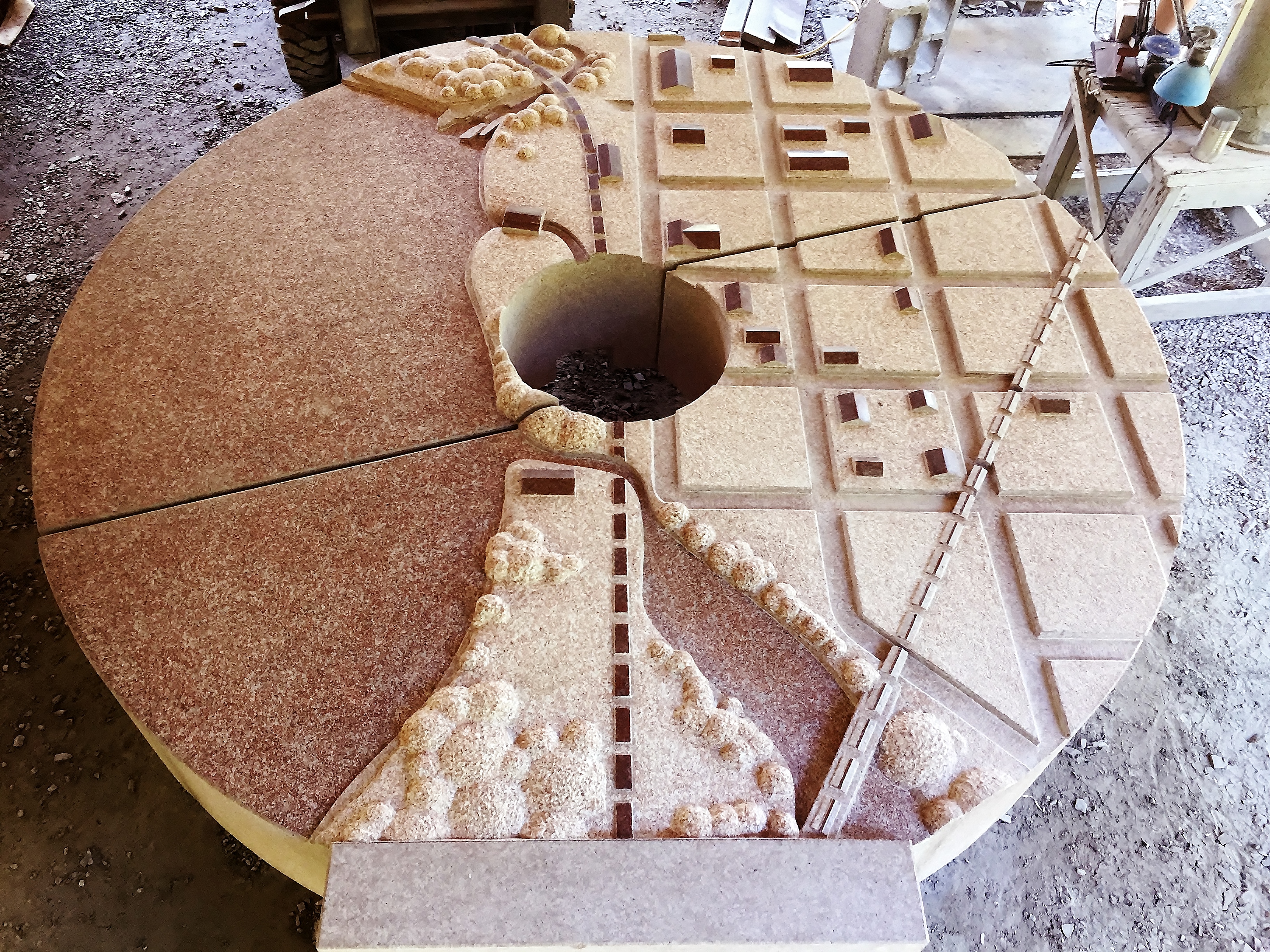 A Multi Pieced Work in Granite
A Multi Pieced Work in Granitefor Portland’s TriMet Milwaukie/Main Street Light Rail Station in Milwaukie, Oregon.
“Threshold” spans the length of the Milwaukie/Main Street Station, with three pieces that take their cues from the site’s history. The north end of the platform is in downtown Milwaukie, while the south end faces Kellogg Lake. The lake began as a natural creek before becoming a millpond for a largeflourmill in the mid 1800s. Later, it was enjoyed for recreational use until around the mind-1950s when it began to decline. Now there are ongoing citizen efforts to restore its scenic integrity and healthy habitat.
 A pair of carved upright granite millstones marks the station’s north entrance and pays homage to that early mill. Carving on one stone suggests an imaginary satellite image of how downtown Milwaukie might have looked circa 1895.
A pair of carved upright granite millstones marks the station’s north entrance and pays homage to that early mill. Carving on one stone suggests an imaginary satellite image of how downtown Milwaukie might have looked circa 1895. On the platform, between the two ends of the station, the shelter appears to be held up by columns of oversized vine maples. Although the carved granite trunks clearly refer to nature, each is composed of assembled sections, as evidence that the trees have been built rather than grown.
While the imagery of the north end evokes human endeavor, the south end speaks of nature. Here we have a naturalistically carved granite streambed that runs eighteen feet, is spanned by a footbridge then drops fourteen feet to the landscape below. When nature cooperates, stormwater courses through the streambed.

For years now, I’ve been working fulltime on a site-specific project for a light rail station in Milwaukie, Oregon as part of Portland’s TriMet transit system. Like most of my jobs, this one was obtained through a competition open to artists nationwide. The design process began about 5 years ago and continued for 2 years. Much of that time was spent collecting research and meeting with community groups and other design team members to define the parameters of the work, and to shoehorn my work into the built environment. Only after that research period did I actually start to design the work I would be making. All that information was figuratively thrown into a stew and my visual concepts took their inspiration from what floated to the top. My work is a direct response to the physical and societal context of the project site.
The fictitious satellite image was developed from current satellite images, old maps, a City of Milwaukie document that showed all the building footprints in town, and from photographs from the same time period. One interesting development came to light while looking at the photos. I had envisioned a carving that included quite a few trees and other landscape features. However, as I looked at a photo of Milwaukie’s waterfront taken from across the Willamette River, I realized that I was looking at the town’s buildings without a single obstruction in the way – no trees! Or even bushes. So as you look at the carving you will notice a relative lack of detail, not because I didn’t want to carve it, but because it didn’t exist at the time.
The tree trunk columns in the waiting shelter are intended to provide a transition between the two polarized ends of the station by using a visual language that includes both natural and built components. Vine maples were chosen as the featured species because they are indigenous to the area and because they have particularly sculptural forms. The carvings were roughed out using a large (huge?) pointing machine, or 3-D pantograph, using actual vine maple pieces as patterns. They were then finish-carved and detailed according to my whim.


Kellogg Lake at the south end of the station has had a checkered past that includes becoming gradually silted in, as well as being used as an unsanctioned dumping site (another interesting, if lengthy, story). My streambed carving includes a lot of “silty” forms and objects, such as bottles etc., to be discovered by those who look closely.
The course of the project has been very complex, to say the least, and continues to develop. I recently learned that TriMet has decided to add another waiting shelter to the station platform, and they will of course need some more vine maple trunks. More job security! I think of this project as being almost a career, rather than just a job.
